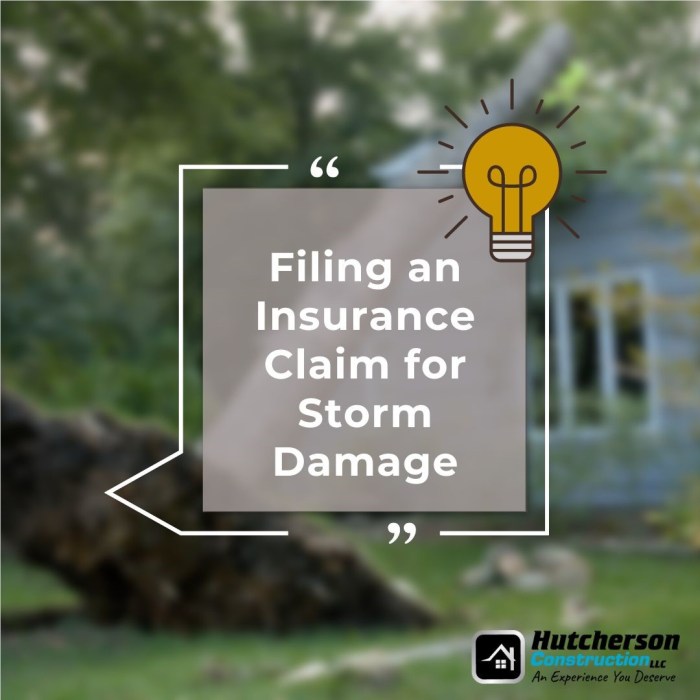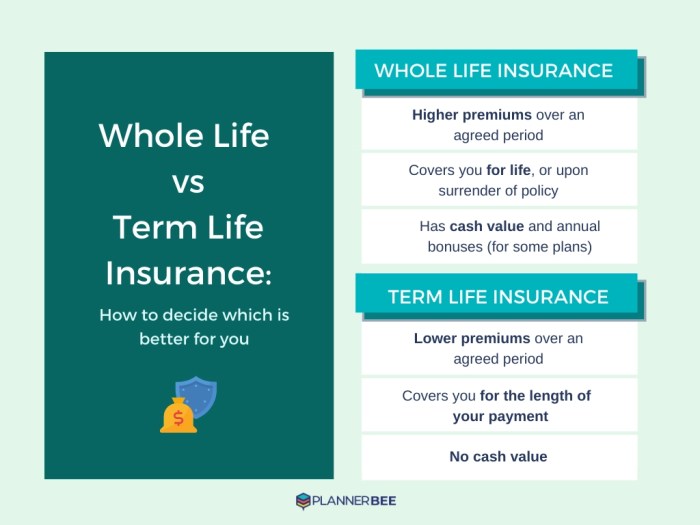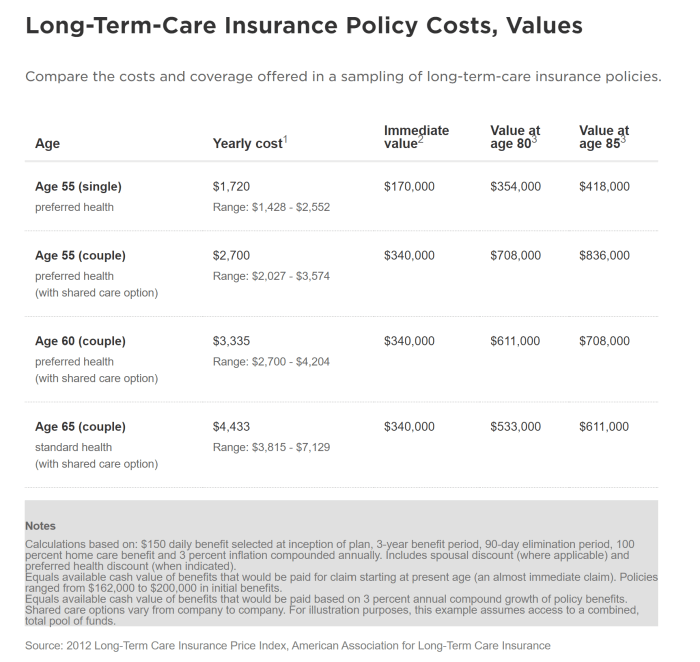Bundled Insurance Packages
Shop car and homeowners insurance – The quiet hum of the insurance industry often masks a curious undercurrent. It whispers of hidden savings, of unexpected synergies, and of the intricate dance between risk and reward. One such intriguing aspect is the bundling of car and homeowners insurance, a practice that, while seemingly straightforward, holds a wealth of subtle complexities. Let’s delve into the shadowy corners of this practice and uncover its secrets.
Bundling your car and homeowners insurance is a common practice that offers the potential for significant cost savings and streamlined management of your insurance needs. However, like a well-crafted mystery, the best approach isn’t always immediately apparent. A careful consideration of various factors is crucial to ensure you secure the most advantageous package.
Comparison of Bundled Insurance Packages
Several insurance providers offer bundled packages, each with its own unique pricing structure. The following table provides a hypothetical comparison, illustrating the potential variations in cost. Remember, these figures are illustrative and actual costs will vary based on location, coverage level, and individual risk profiles. It’s crucial to obtain personalized quotes from multiple providers before making a decision.
| Provider | Car Insurance Cost | Homeowners Insurance Cost | Total Bundled Cost |
|---|---|---|---|
| Insurer A | $1200 | $800 | $1800 |
| Insurer B | $1100 | $950 | $1900 |
| Insurer C | $1300 | $750 | $1950 |
| Insurer D | $1050 | $850 | $1800 |
Advantages and Disadvantages of Bundled Insurance
The decision of whether or not to bundle your insurance policies is a critical one. Weighing the advantages against the disadvantages can illuminate the optimal path. Each situation is unique, and the benefits might not always outweigh the drawbacks.
Advantages often include a lower overall cost due to discounts offered by insurers for bundling policies. This represents a significant financial incentive. Furthermore, managing multiple policies under one provider simplifies administration, reducing paperwork and potential confusion.
However, disadvantages can include limited flexibility. Switching providers for one type of insurance might necessitate a complete overhaul of your insurance arrangements. Additionally, if one aspect of your bundled policy increases in cost, it can impact the overall premium, potentially negating the initial savings.
Obtaining a Bundled Insurance Quote
Securing a bundled insurance quote involves a systematic process. A clear understanding of this process can help you navigate the complexities and ensure you receive the most accurate and competitive offers.
The following flowchart illustrates a typical process:
Flowchart: Obtaining a Bundled Insurance Quote
1. Gather Information: Collect details about your car, home, and driving history. This forms the foundation of your application.
2. Contact Multiple Insurers: Reach out to several insurance providers to request quotes. This ensures you can compare different offerings.
3. Compare Quotes: Analyze the quotes carefully, considering coverage levels and overall costs. Pay attention to the fine print.
4. Choose a Provider: Select the insurer that best meets your needs and budget. This is a crucial decision.
5. Complete Application: Submit the necessary application forms and documentation to your chosen provider.
6. Review Policy: Thoroughly review your policy documents to ensure you understand the terms and conditions.
Factors Affecting Insurance Premiums
The price you pay for car and homeowners insurance isn’t plucked from thin air; it’s a carefully calculated figure based on a multitude of factors. Understanding these influences can help you make informed decisions and potentially lower your premiums. Think of it as a mysterious equation, where each element plays a crucial role in determining the final, sometimes unsettling, result.
One might even say there’s a certain…
je ne sais quoi*… to the process.
Let’s delve into the shadowy corners of insurance calculations, uncovering the secrets that dictate your premium. We’ll examine the key factors influencing both car and homeowners insurance separately, revealing the subtle nuances that can significantly impact your bottom line. Remember, even seemingly insignificant choices can cast a long shadow on your insurance costs.
Car Insurance Premiums: Key Influencing Factors
Several elements contribute to the enigmatic calculation of your car insurance premium. These factors, often intertwined in a complex dance, ultimately determine the cost you’ll bear. The more risk the insurance company perceives, the higher the premium.
- Driving History: A clean driving record, devoid of accidents and traffic violations, is your golden ticket to lower premiums. Each accident or ticket adds a significant weight to the scale, increasing the perceived risk. For example, a single DUI conviction can drastically elevate your premiums for several years.
- Vehicle Type and Age: The type of car you drive plays a pivotal role. Sports cars and high-performance vehicles are generally more expensive to insure due to their higher repair costs and increased risk of accidents. Older cars, while often cheaper to purchase, might have higher premiums due to a greater likelihood of mechanical failure.
- Location: Where you live matters. Areas with high crime rates or a higher frequency of accidents typically have higher insurance premiums. This reflects the increased risk for the insurance company in those locations.
- Age and Gender: Statistically, younger drivers and males tend to have higher accident rates, resulting in higher premiums. This is a controversial but statistically-supported factor.
- Coverage Level: The amount of coverage you choose directly impacts your premium. Comprehensive and collision coverage, while offering greater protection, will generally cost more than liability-only coverage.
Homeowners Insurance Premiums: Key Influencing Factors
Similar to car insurance, your homeowners insurance premium is a result of a complex calculation, taking into account various aspects of your property and lifestyle. The aim is to assess the risk associated with insuring your home and belongings.
- Home Value and Location: The value of your home and its location are major determinants. More expensive homes in high-risk areas (e.g., areas prone to wildfires, hurricanes, or earthquakes) will generally command higher premiums.
- Home Security Features: Features like security systems, smoke detectors, and fire sprinklers can significantly reduce your premium by demonstrating a lower risk of loss or damage.
- Credit Score: Surprisingly, your credit score can influence your homeowners insurance premium. A good credit score often signifies financial responsibility, leading to lower premiums.
- Coverage Level: Similar to car insurance, the level of coverage you select impacts your premium. Higher coverage limits for dwelling, personal property, and liability will generally result in higher premiums.
- Claims History: A history of filing insurance claims can increase your premiums, as it signals a higher risk to the insurance company.
Driving History, Credit Score, and Location: A Deeper Dive
These three factors weave a particularly intricate tapestry in the insurance premium calculation. Let’s unravel their individual threads.
Driving History: A single at-fault accident can haunt your insurance record for years, significantly raising your premiums. Multiple accidents or serious violations can lead to even steeper increases, or even policy cancellation in extreme cases. Imagine the chilling effect of a speeding ticket lingering on your record, casting a long shadow over your future insurance rates.
Credit Score: Your credit score acts as a predictor of your risk profile. A lower credit score might signal a higher risk of non-payment, leading to increased premiums for both car and homeowners insurance. It’s a mysterious connection, but a statistically significant one.
Location: Living in a high-crime area or a region prone to natural disasters dramatically increases your insurance costs. The insurance company’s risk assessment takes into account the frequency of claims in your specific area, leading to higher premiums to offset potential losses.
Lifestyle Choices and Insurance Rates
Your lifestyle choices, seemingly trivial in isolation, can collectively contribute to a significant change in your insurance premium. These seemingly minor decisions can have surprisingly large impacts.
Car Insurance: Frequent long-distance driving increases the likelihood of accidents, leading to higher premiums. Modifying your car with performance parts can also impact your rates, as it increases the perceived risk. Similarly, parking your car in a high-crime area increases the risk of theft or vandalism, leading to higher premiums.
Homeowners Insurance: Having a swimming pool, trampoline, or large dog can increase your homeowner’s insurance premiums due to the increased risk of accidents and liability. Failing to maintain your property properly, leading to structural issues or pest infestations, can also lead to higher premiums. The seemingly innocuous act of neglecting regular home maintenance could have significant unforeseen consequences.
Coverage Options and Customization: Shop Car And Homeowners Insurance

The world of insurance can feel like a shadowy labyrinth, filled with cryptic clauses and bewildering jargon. But understanding your coverage options is the key to unlocking peace of mind. Choosing the right level of protection for your car and home isn’t just about ticking boxes; it’s about crafting a shield against life’s unpredictable events, a shield tailored precisely to your unique circumstances.
Think of it as building a bespoke fortress, brick by carefully chosen brick.The options available for both car and homeowners insurance are surprisingly diverse, each offering a different layer of protection. Failing to understand these nuances could leave you vulnerable when you need it most. A seemingly insignificant detail today could become a significant financial burden tomorrow. Let’s unravel the mystery.
Car Insurance Coverage Options
Car insurance policies are typically constructed from several core components, each designed to cover a specific type of risk. Liability coverage protects you financially if you cause an accident resulting in injury or property damage to others. Collision coverage repairs or replaces your vehicle if it’s damaged in an accident, regardless of fault. Comprehensive coverage goes further, extending protection to damage caused by events like theft, vandalism, or natural disasters.
Uninsured/Underinsured motorist coverage steps in if you’re involved in an accident with a driver who lacks sufficient insurance. Medical payments coverage helps pay for medical expenses for you and your passengers, regardless of fault.
Homeowners Insurance Coverage Options
Similarly, homeowners insurance policies provide a multi-layered defense against various perils. Dwelling coverage protects the physical structure of your home against damage from covered events, such as fire or windstorms. Liability coverage protects you financially if someone is injured on your property or if you accidentally damage someone else’s property. Personal property coverage protects your belongings inside your home from damage or theft.
Additional living expenses coverage helps cover temporary housing costs if your home becomes uninhabitable due to a covered event.
Comparison of Key Coverage Features, Shop car and homeowners insurance
| Coverage Type | Car Insurance | Homeowners Insurance |
|---|---|---|
| Liability | Covers bodily injury and property damage to others caused by you | Covers bodily injury and property damage to others caused by you or members of your household |
| Collision | Covers damage to your vehicle in an accident, regardless of fault | N/A |
| Comprehensive | Covers damage to your vehicle from events other than collisions (theft, vandalism, etc.) | N/A |
| Personal Property | N/A | Covers your belongings inside your home |
| Dwelling | N/A | Covers the structure of your home |
Customizing Insurance Policies
Customizing your insurance policy involves carefully selecting the coverage levels that best align with your individual needs and risk tolerance. This might involve choosing higher liability limits, adding optional coverages like roadside assistance or flood insurance, or adjusting deductibles. A higher deductible, for instance, lowers your premium but increases your out-of-pocket expenses in the event of a claim.
Conversely, a lower deductible means higher premiums but lower out-of-pocket costs. The optimal balance depends on your personal financial situation and risk assessment.
Examples of Beneficial Additional Coverage
Consider adding uninsured/underinsured motorist coverage if you live in an area with a high number of uninsured drivers. Flood insurance is a wise addition for homeowners in flood-prone zones, even if they’re not in a designated flood plain. For car insurance, gap insurance can be beneficial if you owe more on your car loan than its actual cash value.
Umbrella liability insurance provides an extra layer of liability protection beyond the limits of your auto and homeowners policies, offering a crucial safety net in case of a catastrophic event. Remember, a seemingly small investment in additional coverage today could save you from a mountain of debt tomorrow. The quiet hum of security is worth far more than the price of a premium.
Claims Process and Customer Service

Navigating the insurance claims process can feel like wandering through a shadowy labyrinth, each twist and turn revealing a new, unexpected challenge. But understanding the typical steps and knowing how to effectively communicate with your provider can illuminate your path and lead to a smoother resolution. This section will shed light on the process, offering clarity and guidance to navigate this often-complex terrain.The claims process, whether for car or homeowners insurance, generally follows a similar pattern, although specific steps may vary depending on the insurer and the nature of the claim.
However, the underlying principles remain consistent, emphasizing clear communication and timely action.
Car Insurance Claims Process
The typical car insurance claims process begins with promptly reporting the accident to your insurer. This usually involves providing details of the incident, including the date, time, location, and parties involved. Next, you’ll likely need to file a formal claim, often online or by phone, supplying further information such as police reports (if applicable), photographs of the damage, and witness statements.
The insurer will then assign an adjuster who will investigate the claim, potentially requiring an inspection of the vehicle. Once the investigation is complete, the insurer will determine liability and assess the damage. Finally, the settlement will be reached, either through repair of the vehicle, replacement, or financial compensation. Throughout this process, maintaining clear and consistent communication with your adjuster is crucial.
Homeowners Insurance Claims Process
The homeowners insurance claims process begins similarly, with prompt notification of the incident to your insurer. This could range from a minor incident like a broken window to a major event like a fire or severe storm damage. You’ll need to provide detailed information about the damage, including photos and any supporting documentation. An adjuster will then be assigned to assess the damage, often conducting an on-site inspection.
The adjuster will determine the extent of the damage and the cost of repairs or replacement. This process can be significantly more complex than a car insurance claim, often involving contractors, building permits, and lengthy negotiations. Again, consistent and proactive communication is essential for a timely resolution.
Customer Service Comparisons
Customer service experiences vary considerably among insurance providers. Some companies are known for their rapid response times, offering immediate assistance through various channels such as phone, email, and online chat. Others may have longer wait times and less readily available communication options. Similarly, claim resolution efficiency differs; some insurers are known for their quick and efficient processing of claims, while others may involve extensive delays and bureaucratic hurdles.
Consider researching customer reviews and ratings before selecting an insurer to gain insights into their customer service performance. For example, one provider might boast a same-day response to initial claims, while another may take several days or even weeks. The speed of claim processing and the overall ease of communication are key factors to consider.
Effective Communication with Insurance Providers
Effective communication is paramount during the claims process. Keep detailed records of all communication, including dates, times, and names of individuals you speak with. Be clear, concise, and factual in your communication, providing all necessary information promptly. Maintain a professional and courteous tone, even when frustrated. If you encounter delays or difficulties, escalate the issue to a supervisor or manager if necessary.
Consider sending all communications in writing (email is preferred) to create a documented record of your interactions. Remember, a calm and organized approach is more likely to yield a positive outcome. Think of it as a delicate dance—a measured response to every step in the process will help ensure the most favorable resolution. The seemingly insignificant details, like promptly submitting all requested documentation, can often be the difference between a smooth and a frustrating experience.
Saving Money on Insurance
Securing affordable car and homeowners insurance doesn’t have to feel like navigating a shadowy labyrinth. While the process might initially seem shrouded in mystery, a few strategic moves can significantly reduce your premiums, leaving you with more money in your pocket. Think of it as uncovering a hidden treasure map, leading you to significant savings.The key to unlocking these savings lies in a combination of proactive strategies and a keen understanding of how insurance companies assess risk.
By taking control of these factors, you can dramatically lower your overall insurance costs. This isn’t about luck; it’s about informed choices.
Comparing Quotes and Negotiating Rates
Before committing to any insurance policy, it’s crucial to compare quotes from multiple providers. Don’t settle for the first offer you receive; shop around! Different companies use varying algorithms to assess risk, leading to a wide range in premiums for the same coverage. Think of it like comparing prices at different grocery stores – you wouldn’t buy the first item you see without checking other options, would you?
Once you have several quotes, don’t hesitate to negotiate. Many insurers are willing to adjust their rates to secure your business, especially if you have a clean driving record and good credit. Remember, a little negotiation can go a long way.
Discounts and Savings Opportunities
Numerous discounts can significantly reduce your insurance premiums. These often include discounts for bundling car and homeowners insurance, maintaining a good driving record (more on this below), installing security systems in your home, and being a member of certain organizations. Consider it akin to discovering hidden bonuses in a video game – each discount adds up to substantial savings over time.
Furthermore, many insurers offer discounts for paying your premiums annually rather than monthly, and for completing defensive driving courses. Research your options thoroughly to see which discounts you qualify for.
Risk Reduction Strategies
Proactively reducing your risk of accidents and claims is another crucial step towards lower premiums. For car insurance, this involves safe driving practices, such as avoiding speeding, following traffic laws diligently, and maintaining your vehicle in good condition. Regular maintenance not only prevents accidents but also demonstrates responsibility to insurance companies. For homeowners insurance, implementing home security measures like alarms and fire extinguishers, and performing regular maintenance, significantly reduces the likelihood of claims.
These measures are akin to fortifying your castle against potential threats, making it less attractive to unwanted incidents.
Maintaining a Good Driving Record and Credit Score
Your driving record and credit score are significant factors in determining your insurance premiums. A clean driving record with no accidents or traffic violations translates to lower rates. Insurance companies view this as a sign of responsible behavior and reduced risk. Similarly, a good credit score often indicates financial responsibility, leading to lower premiums. This is because a good credit score suggests a lower likelihood of making a claim due to financial instability.
Think of it as a testament to your responsible financial conduct – a beacon of reliability in the eyes of insurance providers.
Insurance and Home Security
The relationship between your home’s security and your homeowner’s insurance premium, much like a shadowy figure lurking in the night, is often unseen but profoundly impactful. A well-secured home is a less risky investment for insurance companies, leading to potential savings for you. Similarly, robust car security can significantly influence your car insurance rates. Let’s unravel this mystery.Home security measures and car security systems play a crucial role in determining your insurance premiums.
Insurance companies recognize that enhanced security reduces the likelihood of theft, vandalism, and other covered incidents. By investing in these preventative measures, you demonstrate a commitment to risk mitigation, which translates into financial rewards.
Home Security Systems and Discounts
Implementing comprehensive home security systems often results in lower homeowner’s insurance premiums. These systems typically include features that deter potential intruders and provide faster response times in case of emergencies. The presence of a monitored alarm system, for example, is frequently rewarded with significant discounts. Other security features that can lead to premium reductions include reinforced doors and windows, exterior lighting, and security cameras.
Imagine a burglar attempting to break into a home equipped with a loud alarm, bright lights, and cameras recording their every move – it’s a scenario less appealing to most. A recent study showed that homes with monitored alarm systems experienced a 20% reduction in burglaries, directly impacting insurance claims.
Car Security Systems and Insurance Rates
The impact of car security systems on insurance rates is equally significant. Insurance companies often offer lower premiums for vehicles equipped with anti-theft devices such as immobilizers, alarms, and tracking systems. These devices make it more difficult for thieves to steal your car, reducing the risk for the insurance company and ultimately benefiting you. For instance, a car equipped with a GPS tracking system and an alarm might qualify for a 10-15% discount.
The reduction in the likelihood of theft or damage translates directly into lower premiums, a welcome surprise in an unpredictable world.
Security Features and Their Impact on Insurance Costs
| Security Feature | Home Insurance Impact | Car Insurance Impact |
|---|---|---|
| Monitored Alarm System | Significant discount (often 10-20%) | Moderate discount (5-10%) |
| Security Cameras | Moderate discount (5-10%) | Small discount (2-5%) – primarily if integrated with a tracking system |
| Reinforced Doors and Windows | Small discount (2-5%) | N/A |
| Exterior Lighting | Small discount (2-5%) | N/A |
| Immobilizer | N/A | Moderate discount (5-10%) |
| GPS Tracking System | N/A | Moderate to significant discount (10-15%) |
| Alarm System | N/A | Moderate discount (5-10%) |
Legal Aspects of Car and Home Insurance
The seemingly mundane world of insurance policies holds a surprising amount of legal weight. Understanding your responsibilities as a policyholder is crucial, not just for financial security, but to avoid potentially serious legal ramifications. Failure to comply with the terms of your insurance contract or to maintain adequate coverage can lead to significant financial losses and even legal battles.
This section explores the legal landscape surrounding car and home insurance, shedding light on the responsibilities, potential consequences, and common disputes.The legal responsibilities of a policyholder center around accurate representation of risk, timely payment of premiums, and adherence to the terms and conditions Artikeld in the insurance contract. For car insurance, this includes providing accurate information about the vehicle and drivers, maintaining a valid driver’s license, and reporting accidents promptly and truthfully.
Home insurance requires accurate disclosure of property details, maintenance of the property to a reasonable standard, and prompt reporting of any incidents that could lead to a claim. A failure to meet these obligations can lead to policy cancellation, denial of claims, or even legal action by the insurance company.
Policyholder Obligations and Responsibilities
Policyholders have a legal duty to act in good faith and provide accurate information to their insurer. This means truthfully disclosing all relevant information when applying for insurance and during the claims process. For example, failing to disclose a previous accident or a history of home repairs could invalidate your policy. Furthermore, policyholders are obligated to pay premiums on time and to comply with any specific conditions Artikeld in their policy documents, such as maintaining security systems or regularly inspecting their property.
The consequences of breaching these obligations can range from a refusal to pay a claim to the cancellation of the policy and potential legal action. A case study from 2023 involved a homeowner who deliberately withheld information about a previous water leak, resulting in the insurer successfully denying their claim for subsequent water damage.
Consequences of Inadequate Insurance Coverage
Maintaining adequate insurance coverage is not merely a financial consideration; it carries significant legal implications. Driving without the legally required minimum liability insurance, for example, can result in hefty fines, license suspension, and even imprisonment depending on the jurisdiction and the circumstances of any accident. Similarly, underinsuring your home could leave you financially devastated in the event of a major disaster like a fire or a natural catastrophe.
Should you be found liable for damages exceeding your coverage limits, you could face lawsuits and potentially substantial personal liability, including the seizure of assets to satisfy judgments against you. Imagine a scenario where a driver with minimal liability insurance causes a serious accident resulting in significant medical expenses and property damage. The injured parties could sue the at-fault driver, and if their assets are insufficient to cover the damages, they could face bankruptcy.
Common Insurance-Related Legal Disputes
Disputes between policyholders and insurance companies are unfortunately common. These disputes often revolve around the interpretation of policy terms, the valuation of losses, or the denial of claims. One frequent area of contention is the definition of “reasonable care” in home insurance. A dispute might arise if a homeowner claims damage due to neglect, and the insurer argues that the homeowner failed to meet their obligation to maintain the property to a reasonable standard.
Another common dispute involves disagreements over the value of damaged property. The insurer may offer a lower settlement than the policyholder believes is fair, leading to a legal battle over the appropriate compensation. A recent case in a regional court saw a policyholder successfully challenge their insurer’s valuation of a damaged antique, resulting in a significantly higher payout.
The court considered expert appraisals and established market value in its decision. Such cases highlight the importance of thoroughly reviewing policy terms, maintaining accurate records, and seeking legal counsel if necessary.



